---------------------------------------------------------------------------------------------------------------------
Author's Statement for Transparency and Disclosure
The test sample/s featured in this article have been provided for technical testing and review by the manufacturer. Test samples are retained by the reviewer following publication of the completed review for the purposes of long term testing and product comparisons.
All output figures and test results published in this review are the sole work of the reviewer, and are carried out independently and without bias. Test results are reported as found, with no embellishments or alteration. Though best endeavours are made to maintain the accuracy of test equipment, the accuracy of these results is not guaranteed and is subject to the test equipment functioning correctly.
----------------------------------------------------------------------------------------------------------------------
Author's Statement for Transparency and Disclosure
The test sample/s featured in this article have been provided for technical testing and review by the manufacturer. Test samples are retained by the reviewer following publication of the completed review for the purposes of long term testing and product comparisons.
All output figures and test results published in this review are the sole work of the reviewer, and are carried out independently and without bias. Test results are reported as found, with no embellishments or alteration. Though best endeavours are made to maintain the accuracy of test equipment, the accuracy of these results is not guaranteed and is subject to the test equipment functioning correctly.
----------------------------------------------------------------------------------------------------------------------
I've previously reviewed the SxxR rechargeable batons from Olight. This is the simpler non-rechargeable S30.
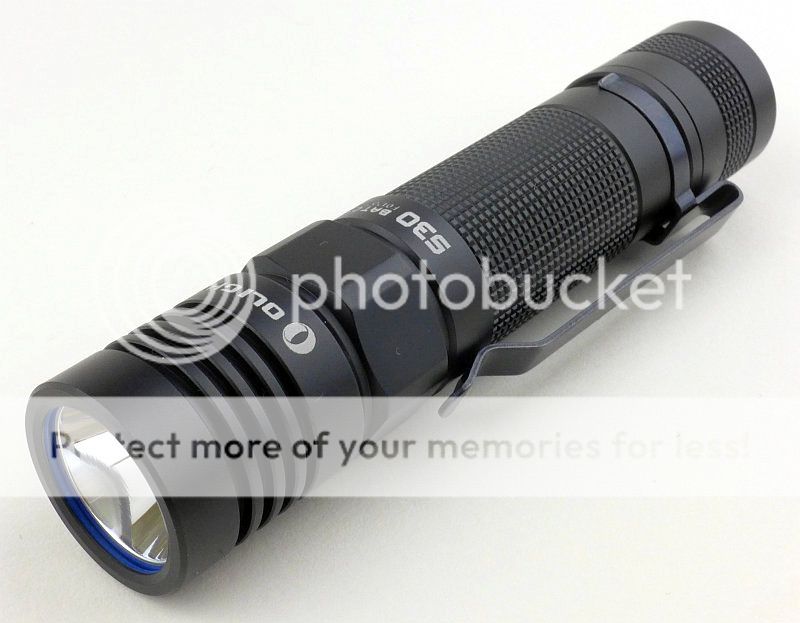
Taking a more detailed look:
Like the other batons, the S30 comes in a plastic box.
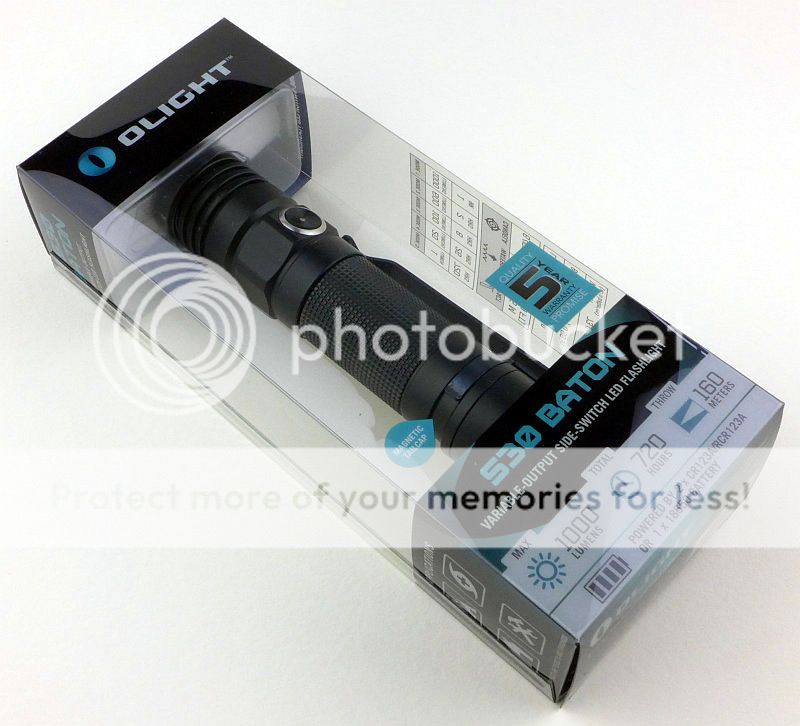
Included are an instruction leaflet, spare O-rings and a spare insulator.
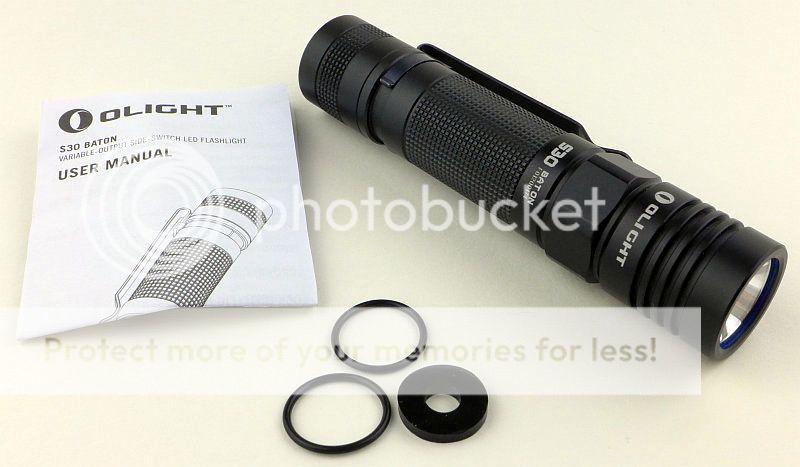
Already fitted is a steel pocket clip.
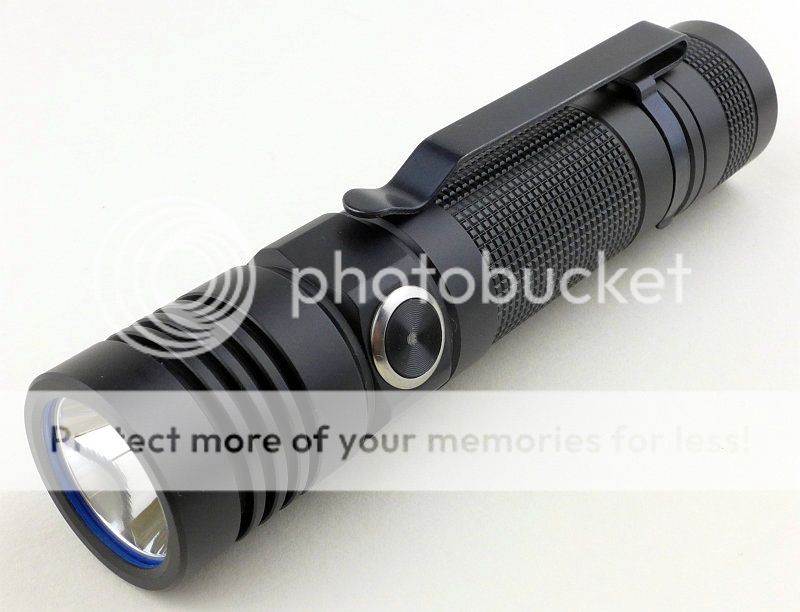
The S30 next to the original S30R (not the S30R II).
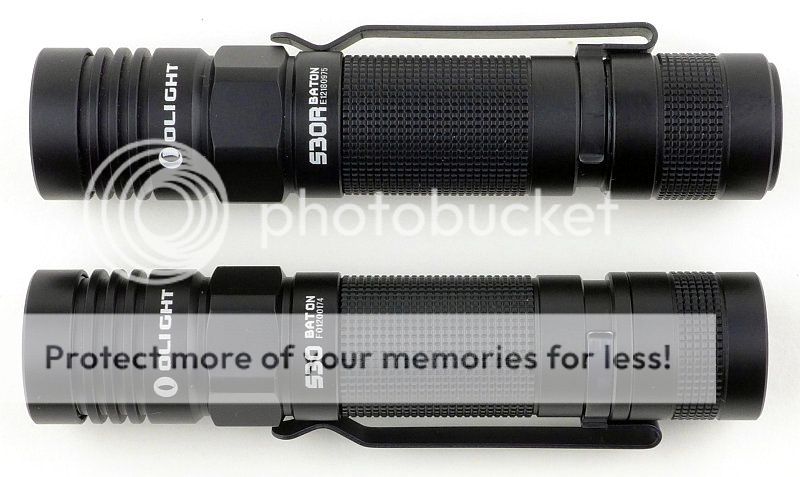
For scale, the S30 is next to an 18650 cell.

Also supplied with the S30 is a 2x CR123 holder to reduce cell rattle when using these smaller cells.
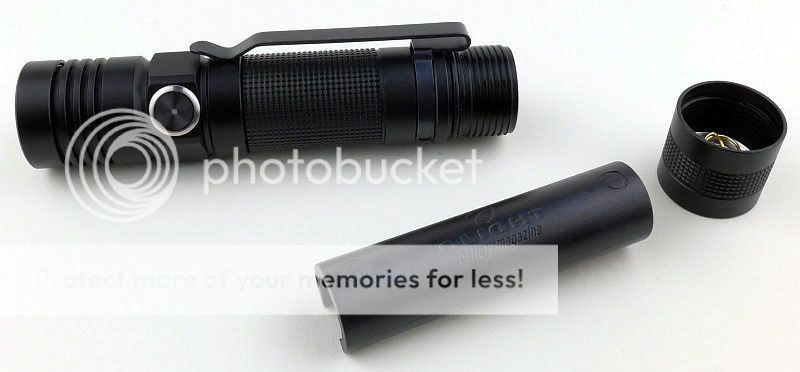
Inside the tail-cap the negative terminal is a spring. The same spring is used to hold the tail-cap magnet in place.
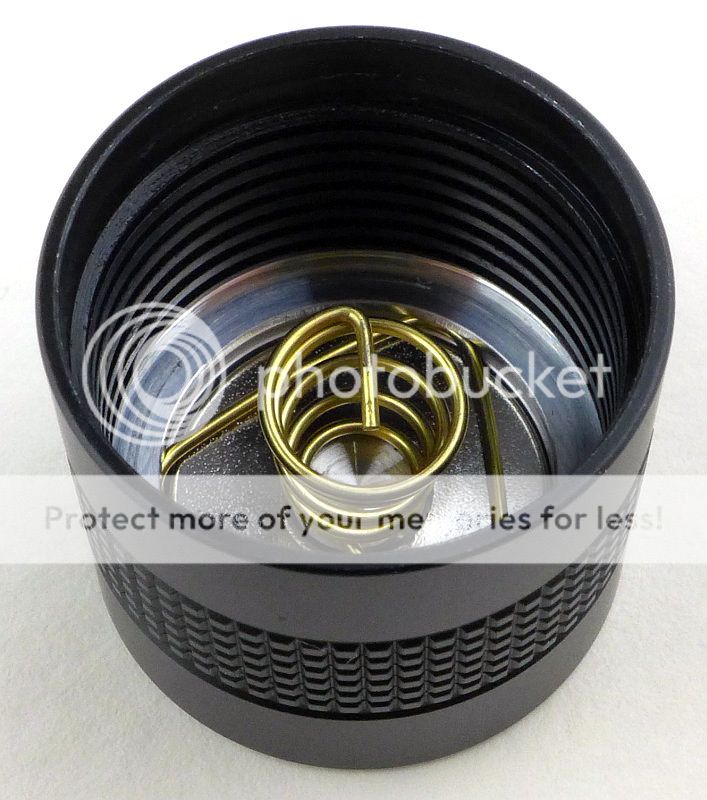
The threads are square cut.
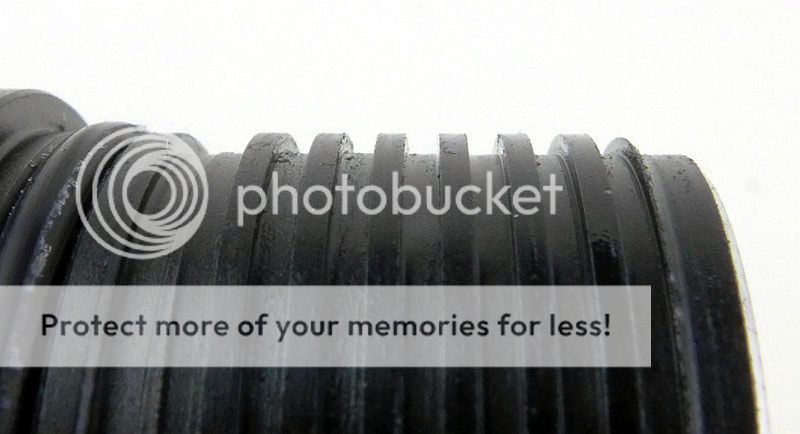
Inside the battery tube you can see the positive terminal spring.
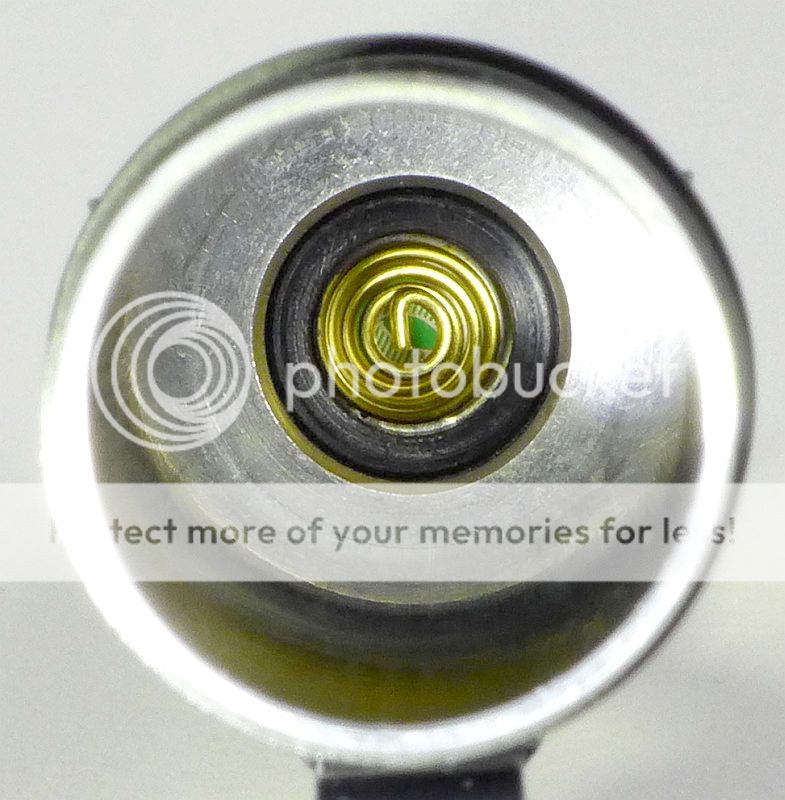
The side switch has illumination to indicate low power or that the light is locked.
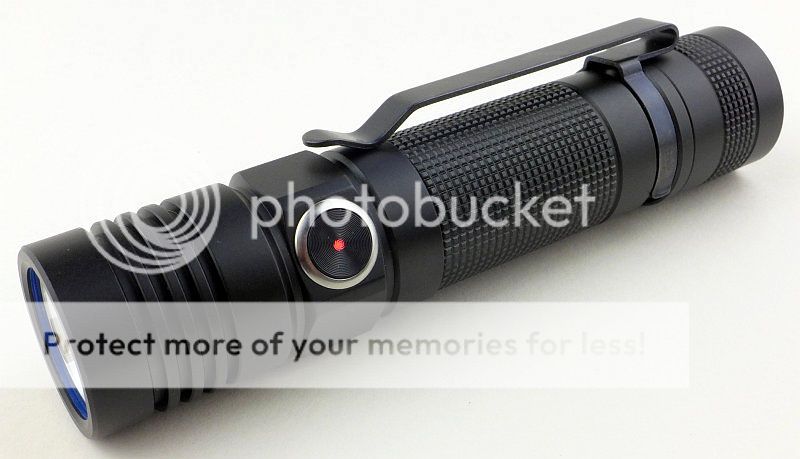
A closer view of the switch.
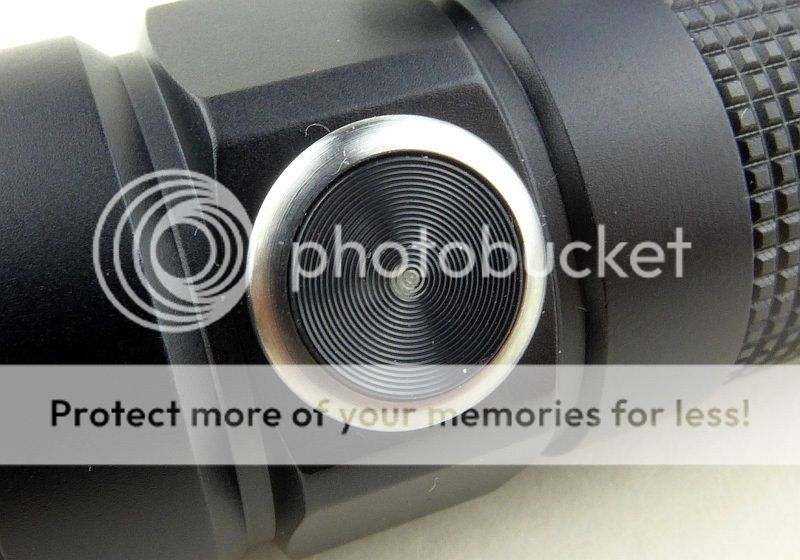
The tail-cap is sleek and simple.
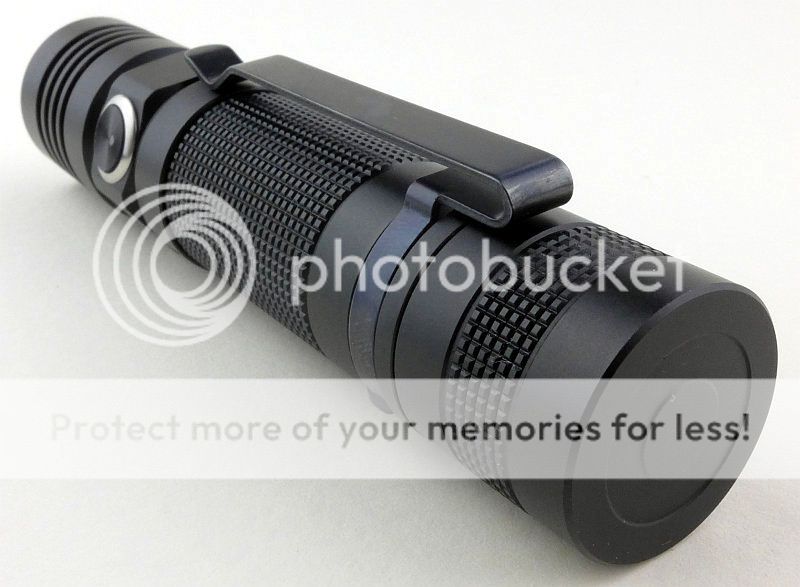
The S30 uses a XM-L2 LED.
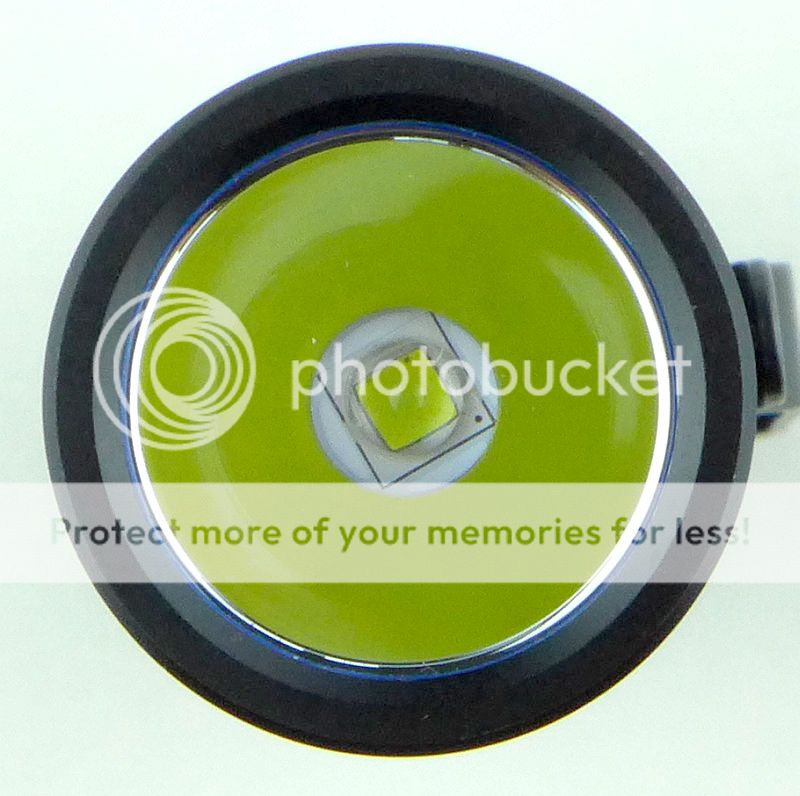
The beam
Please be careful not to judge tint based on images you see on a computer screen. Unless properly calibrated, the screen itself will change the perceived tint.
The indoor beamshot is intended to give an idea of the beam shape/quality rather than tint. All beamshots are taken using daylight white balance. The woodwork (stairs and skirting) are painted Farrow & Ball "Off-White", and the walls are a light sandy colour called 'String' again by Farrow & Ball. I don't actually have a 'white wall' in the house to use for this, and the wife won't have one!
Starting indoors, the S30 has a broad hotspot and wide spill.
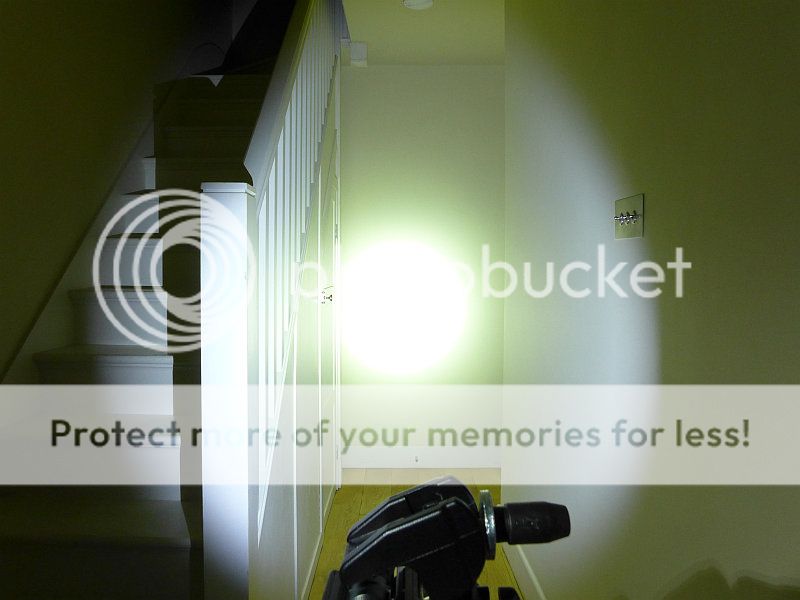
In close to medium ranges the S30 gives you a nice spread of light.

Modes and User Interface:
The S30 has a set of modes and operation like the other Baton lights. Turbo, High, Medium, Low, Moon and Strobe.
From OFF – Press and hold the switch to get direct access to Moonlight
From OFF – Click the switch once to get the last used constant output level (including Moonlight)
From OFF – Double click to get direct access to Turbo
From OFF – Triple click to get direct access to Strobe
From ON - Triple click to get Strobe
From ON - Double click to get Turbo
From ON – Press and hold the switch to cycle through Low, Medium, High, Turbo, Low etc (moonlight is not included in these modes)
To Lock the S30 From OFF – press and hold the switch for 2s During this time it will come on in Moonlight and then go off again at which point it is locked out.
The S30 lights up the button illumination to indicate it has locked-out. If you press the button while the S30 is locked-out the switch will light up red to let you know it is locked.
To Unlock press and hold the switch for 1s, this will enter Moonlight
The button illumination starts to flash as the cell's charge becomes low.
Batteries and output:
The S30 runs on 1x 18650 or 2x CR123.
To measure actual output, I built an integrating sphere. See here for more detail. The sensor registers visible light only (so Infra-Red and Ultra-Violet will not be measured).
Please note, all quoted lumen figures are from a DIY integrating sphere, and according to ANSI standards. Although every effort is made to give as accurate a result as possible, they should be taken as an estimate only. The results can be used to compare outputs in this review and others I have published.
| ___________________________________________ | ________________________________ | ________________________________ |
| Olight S30 using 18650 (unless otherwise stated) | I.S. measured ANSI output Lumens | PWM frequency or Strobe frequency (Hz) |
| ___________________________________________ | ________________________________ | ________________________________ |
| Turbo using CR123 | 938 | 0 |
| Turbo | 918 | 0 |
| High | 510 | 0 |
| Medium | 128 | 0 |
| Low | 17 | 0 |
| Moon | Below threshold | 0 |
| Strobe | 248 | 9.8 |
* Beacon and Strobe output measurements are only estimates as the brief flashes make it difficult to capture the actual output value.
Peak Beam intensity measured 9400lx @1m giving a beam range of 194m.
There is parasitic drain at 15uA which would take 23.58 years to drain a 3100mAh cell.
Performance on 18650 or CR123 is very similar except that runtime is longer on 18650. After an initial Turbo phase, the output drops to High for the majority of the run, and is well regulated at this output level.
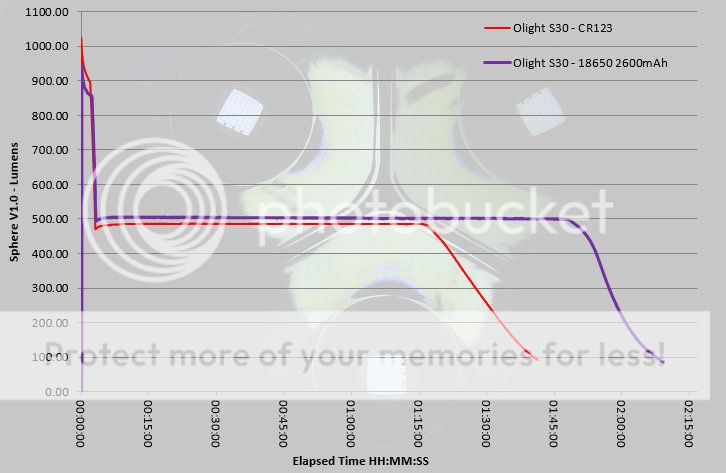
Troubleshooting
This is a new section I am adding to mention any minor niggles I came across during testing, in case the information helps anyone else.
No issues were encountered during testing.
As per the description of this section, this information is provided in case anyone else finds a similar 'issue' that might be fixed in the same way.
The S30 in use
There may be rechargeable versions, but sometimes I just like a simple non-rechargeable light. Keeping things simple and being in control of the cells and their charge.
The Olight Baton lights are a joy to use. Direct access to the moonlight mode is a winning feature. There is no danger of getting a blast of high output, in fact if you get it wrong and hold the button for too long, you just get lock-out. Unlocking these lights brings them on in moonlight.
The memory works well as it will also remember moonlight, as well as any other constant mode you last used. The only downside here is that for a moon mode capable light, the switch click is quite loud, so a middle of the night walkabout starts with a 'CLICK' and soft moonlight beam.
With the S30 you have three weapons against accidental activation. First it the fixed ring around the switch. This gives enough protection to the switch that it is very unlikely to be pressed by mistake, but is also low-profile enough to be barely noticeable when pressing the switch. Second is the lock-out mode, and third, you can always unscrew the tail-cap slightly.
The magnetic tail-cap can be a blessing and hindrance, as often I've ended up fishing things out of my bag I didn't want to. If you are going to use it regularly you will scuff up the tail-cap nicely as there is no buffer, but more importantly you might scuff up the surface you put it on, so be careful.
Of the Baton range, the S30, though not as compact as others, but is a really comfortably size to hold, with the added benefit of near 1000lm output and the runtime an 18650 can provide.
For EDC carry, I would have liked a holster, as I'm not a fan of pocket clips but this is really the only criticism I have.
The S30 is a great every-day-light with a great interface. For me direct access to Moon and Turbo are key features of this light.
Review Summary
| _______________________________________________ | _______________________________________________ |
| Things I like | What doesn't work so well for me |
| _______________________________________________ | _______________________________________________ |
| Direct access to Turbo and Moon modes | No holster |
| Near 1000lm output | Relatively loud switch click |
| Side switch and great interface | |
| Low parasitic drain |
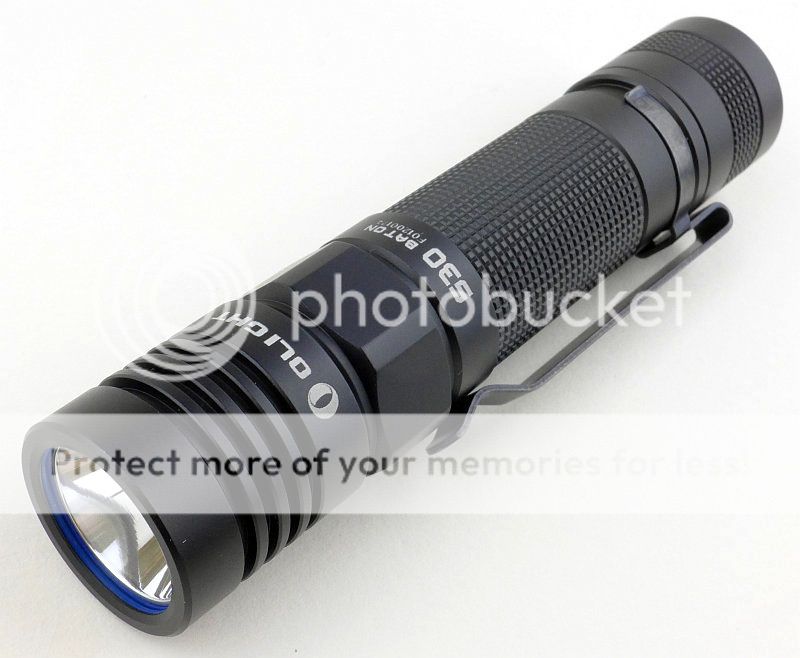
If you enjoyed my reviews, please remember to 'Like' me on Facebook and follow me on Twitter @Subwoofer_CPF
to get all the latest updates and news.
You can also find exclusive insights on Instagram and Pinterest





to get all the latest updates and news.
You can also find exclusive insights on Instagram and Pinterest


